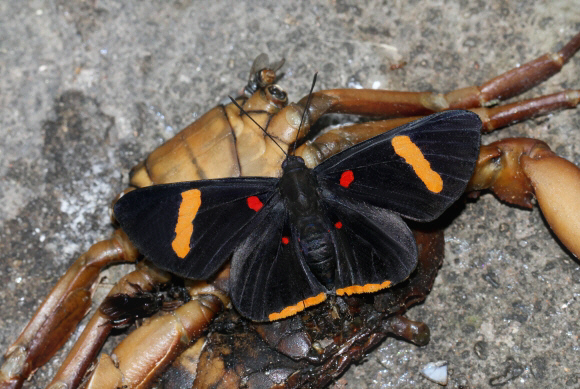 Melanis electron pronostriga, Santa Fe de Antioquoia, Colombia – Adrian Hoskins
Melanis electron pronostriga, Santa Fe de Antioquoia, Colombia – Adrian Hoskins
Introduction
The name Melanis refers to the melanic pigment of the black scales which cover the distinctively shaped wings of all members of this genus. Many Melanis species are marked with orange borders on the hindwings, and / or similarly coloured diagonal bands on the forewings. In some species the apex of the forewings is orange, and in others there are large red spots near the base of the wings.
There are 27 known members in the genus. One particularly attractive species, M. pixe, has a range extending from Mexico to Panama, but the majority of species are found in the Andes mountains, or in the Amazonian lowlands.
Melanis electron occurs as 7 named subspecies found variously from Belize to Peru and Brazil.
Habitats
This butterfly is found in forested habitats at elevations between about 100-800m.
Lifecycle
Melanis larvae are hairy, and feed gregariously on the leaves of trees in the family Leguminosae. The pupae are said to be formed in clusters on tree trunks.
Adult behaviour
The butterflies have a slow fluttery flight typical of aposematic species, drifting gracefully above the vegetation at a height of about 1-2m above ground level. Males can sometimes be found imbibing mineralised moisture from damp ground, or feeding at carrion.
